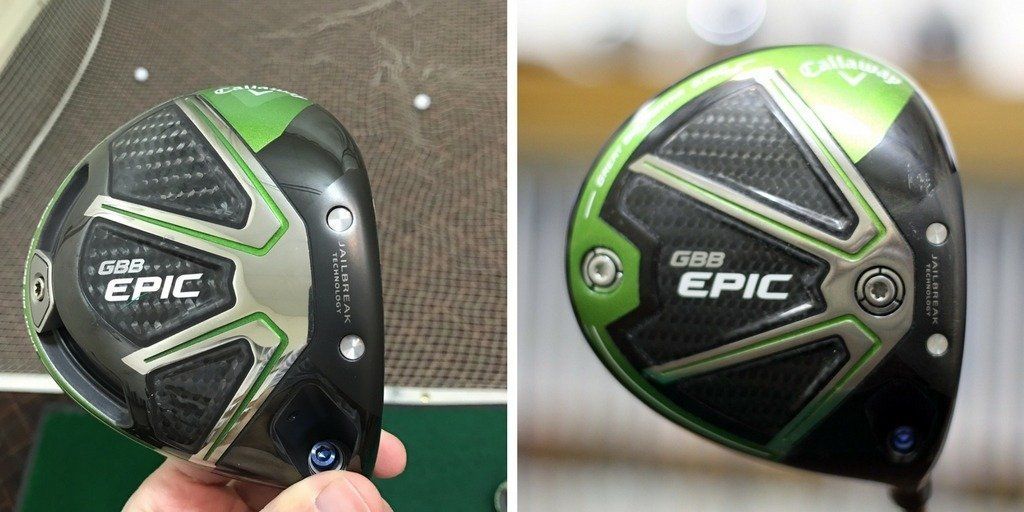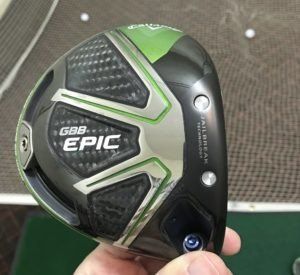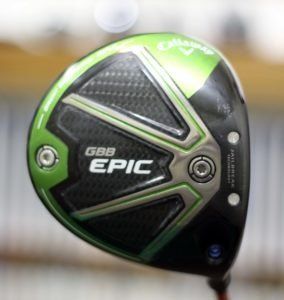
For the past couple of months there’s been a lot of chatter about a driver that is supposed to be a “game changer.” It is equipped with technology that is apparently revolutionary. Golfers are excited and they want to find out more. The mystery driver is the Callaway Great Big Bertha Epic.
If you are rolling your eyes at this point, I don’t necessarily blame you. Every year golf consumers are inundated with a fresh set of product releases that have lofty claims attached to them.
Last year it was the M series from Taylor Made, and from the looks of it Callaway is going to take center stage in 2017 with their Epic driver.
I received a phone call about a month ago that piqued my interest in this driver. My friend Woody Lashen, who is the co-owner of Pete’s Golf Shop, said that he and his staff had tried out the Great Big Bertha Epic at an event, and were extremely impressed. While they hadn’t had a chance to test it on their own launch monitors, the technology seemed to be a step in the right direction.
We wanted to find out if this driver was the real deal, so we arranged a test with 12 golfers at Pete’s Golf to measure some key data points, and see if the Callaway Epic driver was in fact…epic.
Update: Callaway recently announced their Epic Flash driver, here is my review.
The War Against the USGA
Golf clubs have come a long way over the last two decades in terms of technology. When we are talking about the driver, the number one selling feature has always been distance.
The golf world is obsessed with how far anyone can drive the ball, from the pros down through the amateur ranks. For a while it seemed like things were getting out of hand until the USGA put the brakes on what manufacturers could do. In the late nineties they imposed the COR rule, which minimized how thin the face of a driver could be, preventing something referred to as the trampoline effect.
Since then, manufacturers have been trying to find ways around this rule, and to most casual observers it seems like they are getting tapped out in adding more distance to each new release.
That doesn’t stop them from pouring tens of millions of dollars into research and development every year. Golfers want more distance, and club makers want to give it to them (and charge handsomely for it).
Essentially it all comes down to how efficient a driver can be at transferring energy from the clubface to the ball. How much ball speed can you generate from each strike? That is the focal point of what the Callaway Great Big Bertha Epic driver has supposedly unlocked, without formally breaking any of the USGA’s rules. They are referring to this as jailbreak technology. What we were looking for in our test results is whether or not it could increase ball speeds for our testers.
The Clubs
There are two available versions of the Callaway Big Bertha Epic – the Epic and the Subzero.


As you can see they are remarkably similar in design, but there are some noticeable differences that you should be aware of.
After testing both versions, Woody Lashen believes that most golfers are going to benefit from using the Epic versus the Subzero.
The Epic offers more adjustability and more forgiveness on off-center hits. It is worth noting that the weights on the rear of the clubface allow you to move the center of gravity by over 4 ½ millimeters. This doesn’t sound like much, but that’s significant, and something that club fitters will be extremely excited about.
The Subzero driver offers a solution for the more advanced golfer. The center of gravity is below the center of the face, which is actually a very difficult thing to do. This will lower the spin rate, which can be an enormous benefit. The only tradeoff with the Subzero is that off-center hits will be less stable, which is referred to in the industry as MOI.
Additionally, Woody noted that the interchangeable weights on the Subzero will not have as much affect as the regular Epic model, something golfers should also be aware of.
I tried both drivers, and the Epic actually performed better for me than the Subzero because my spin rate with my driver is already low, and it put me into “danger” territory.
Let’s find out how our test went…
The Test
For our test of the Callaway Great Big Bertha Epic driver, we were able to gather 12 customers from Pete’s Golf (myself included).

It’s important to know that Pete’s Golf fit every golfer who took part in our test for their current driver. They were once again recognized as one of the top fitters in the industry by Golf Digest, and when someone gets their equipment fine-tuned by Pete’s Golf you can be sure they have the best combination for their swing.
Woody Lashen believed that since all of these golfers were using drivers and shafts that were optimal for their swings, any gains in ball speed (or other factors) would be significant.
A few other points to note from our testers:
- They ranged in handicaps from 0 – 21
- They had swing speeds from 80 mph – 110 mph
- All of their drivers were made in the last five years from a major manufacturer (Ping, Callaway, Titleist, PXG, and Taylor Made to be exact)
So we had a nice cross section of golfers and different equipment to work with, and believed that we could get a sense if the Callaway Great Big Bertha Epic driver was going to outperform what they currently had.
We used a Foresight Sports launch monitor to gather our results, and were confident that everything was extremely accurate.
Drum roll please….
For the most important test factor we were looking for, our golfers gained on average 1.7 mph in extra ball speed, which resulted in almost 5 yards of extra distance.
Additionally, their drives measured 3.5 yards closer to their target on average, which was actually more important to us (but certainly not to golfers who are obsessed with distance).
We were able to see that on average the Callaway Great Big Bertha Epic driver was not only longer than our players’ current driver, but it was also more accurate.
As mentioned earlier, the staff of Pete’s Golf had recently fit all of our players with newer drivers. Woody strongly believed if that weren’t the case, their gains in ball speed would have been more significant.
From a fitter’s perspective these numbers were impressive, especially since we had so many different drivers being used and a variety of different kinds of golf swings.
Is the Callaway Great Big Bertha Epic Driver the Real Deal?
Managing expectations is the singular most important thing anyone can do to become a happier golfer, and I often write about that on this site.
It’s no different with golf equipment. You have to have a realistic expectation of what a new golf club can actually do for your game.
When any new technology enters the golf market, there are huge marketing campaigns that get golfers extremely excited. More importantly, their expectations are through the roof.
If you were expecting absolute magic from the Callaway Great Big Bertha Epic driver, then you might be sorely disappointed by our findings. The truth of the matter is that golf club technology has come a long way, and every major manufacturer is releasing quality clubs these days. It would be very difficult for anyone to blow other recent releases out of the water (or at least that’s our opinion at this point).
However, we do believe Callaway has pushed things forward with this driver. The gap between the competition is not going to be enormous though, and that’s something worth noting.
Certain players are going to try out this club, and it is entirely possible they could gain 20 extra yards (one of our testers did). Others might see marginal gains, or none at all, and it might not be worth it to switch.
Should you be running out the door to buy the Callaway Great Big Bertha Epic when it releases on January 27th?
Here is what I would tell any golfer who is interested. This is a great driver. We have evidence that it outperformed other drivers that were professionally fit to our testers’ swings.
However, you won’t know if it is going to perform better for you until you test it, and are able to compare numbers under the watchful eye of a professional fitter who can measure your performance with a launch monitor.
Several of the people who tested the Callaway Epic want to purchase it when it’s released, and I predict that this driver will sell very well in 2017. You can pre-order the driver here for release on January 27th.
Update: Since this article was published Callaway released their new Rogue driver, you can find that review here.
We care about the protection of your data Read our Privacy Policy